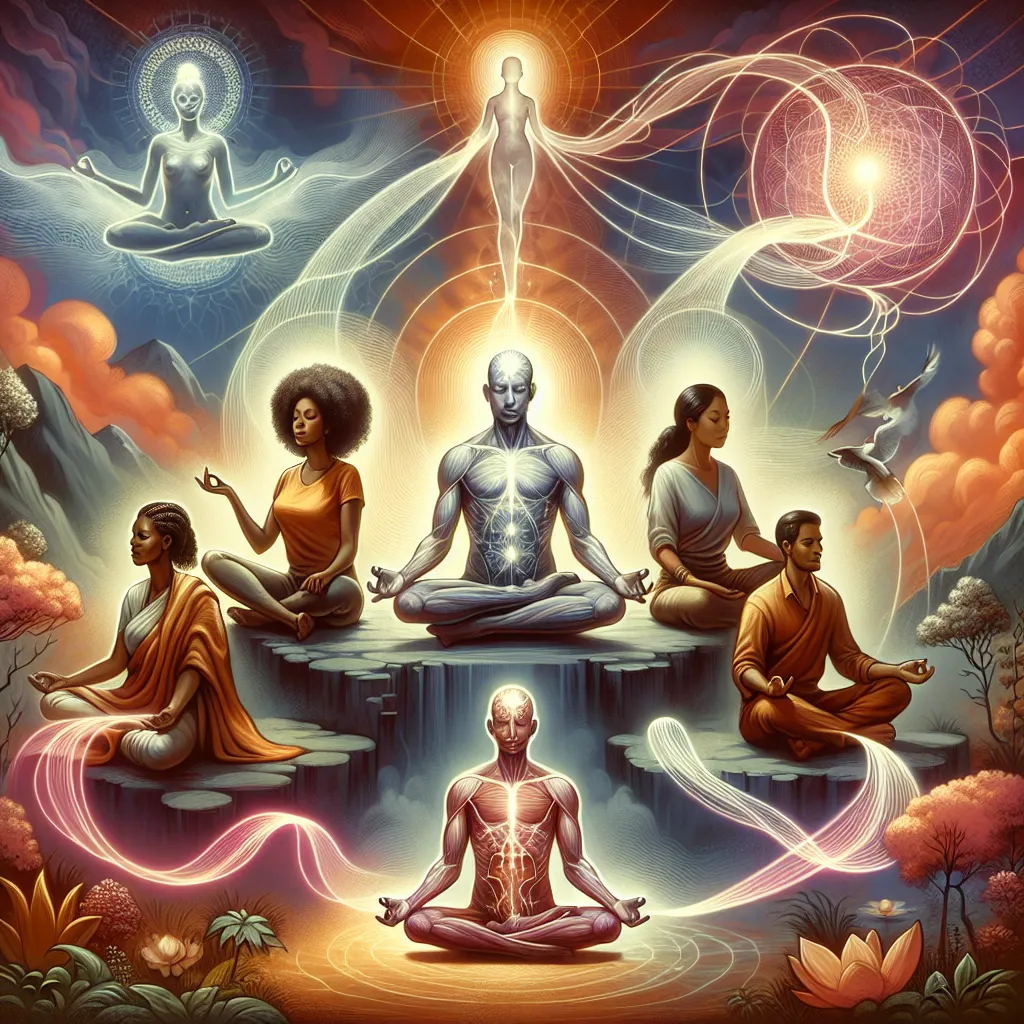
- Published on
- Authors

- Name
- You
Kundalini and the Nadis: Understanding the Energy Channels
Kundalini, often depicted as a coiled serpent, represents an immense reservoir of potential energy situated at the base of the spine. The awakening and rising of this energy through the nadis, or energy channels, is a central focus of Kundalini Yoga—a balanced blend of ancient mysticism and modern anatomical understanding.
The Three Major Nadis
Nadis are akin to pathways or conduits through which prana, or life force, flows within the body. Of the 72,000 nadis believed to exist in the human body, three hold overarching importance: Ida, Pingala, and Sushumna.
1. Ida Nadi
- Location: Originates at the left of the base of the spine and spirals upwards, terminating at the left nostril.
- Attributes: Feminine, lunar, cooling, and associated with passive energy.
- Connection: Represents the parasympathetic nervous system and is linked with the subconscious mind.
2. Pingala Nadi
- Location: Begins at the right of the base of the spine, mirroring Ida, and ends at the right nostril.
- Attributes: Masculine, solar, heating, and represents active energy.
- Connection: Symbolizes the sympathetic nervous system, governing our conscious actions and responses.
3. Sushumna Nadi
- Location: Runs centrally along the spine, overlapping the physical spinal column.
- Attributes: Neutral, balanced, and acts as a conduit for Kundalini energy to rise through the Chakras.
- Connection: Represents the central nervous system, embodying equilibrium between Ida and Pingala.
| Nadi | Pathway & Termination | Energy Type | Attributes | Bodily System |
|---|---|---|---|---|
| Ida | Left side of spine to nostril | Lunar (feminine) | Cooling, passive | Parasympathetic |
| Pingala | Right side of spine to nostril | Solar (masculine) | Heating, active | Sympathetic |
| Sushumna | Central along spine | Neutral | Balanced, conduit for energy | Central Nervous System |
The Mystical and Scientific Convergence
The concept of nadis transcends its mystical origins, finding parallels in modern anatomy and neuroscience. The intricate dance between Ida and Pingala maps closely to the autonomic nervous system's regulation, while Sushumna's path resonates with the spinal cord’s role in neural communication.
Awakening Kundalini
Kundalini Yoga techniques—such as pranayama (breath control), asanas (postures), and mantras (chants)—serve dual purposes:
- Clearing the Nadis: Ensures unobstructed flow of energy.
- Reinforcing Neural Pathways: Enhances neuroplasticity, promoting both physical and spiritual health.
The Journey Through the Chakras
Kundalini's ascent through Sushumna proceeds by energizing and awakening each chakra, or energy center, from the base to the crown, resulting in a profound transformation that embraces consciousness expansion and unity with the cosmos.
Integrating Practical Science with Spiritual Practice
Our comprehension of Kundalini Yoga is enriched by blending scientific inquiry and mystical wisdom. The following practices can harmonize the nadis and initiate Kundalini awakening:
Daily Practices
- Breathing Exercises (Pranayama): Alternate nostril breathing balancing Ida and Pingala.
- Mindfulness Meditation: Enhances awareness, potentially unlocking deeper layers of subconscious.
- Physical Postures (Asanas): Helps condition the body for energy flow and balances symmetry.
Advanced Techniques
- Kundalini-Specific Yoga Sequences: Designed to systematically awaken Kundalini energy.
- Neurofeedback & Biofeedback: Modern technologies aiding practitioners in monitoring and optimizing bodily functions.
By fostering a holistic approach, embracing the convergence of ancient rituals and modern science, we pave the way toward the harmonious awakening of Kundalini energy, leading to revitalized health, self-realization, and spiritual enlightenment.
Embrace this blend of timeless wisdom and cutting-edge science to embark on a journey of profound transformation and consciousness expansion.
Namaste.
